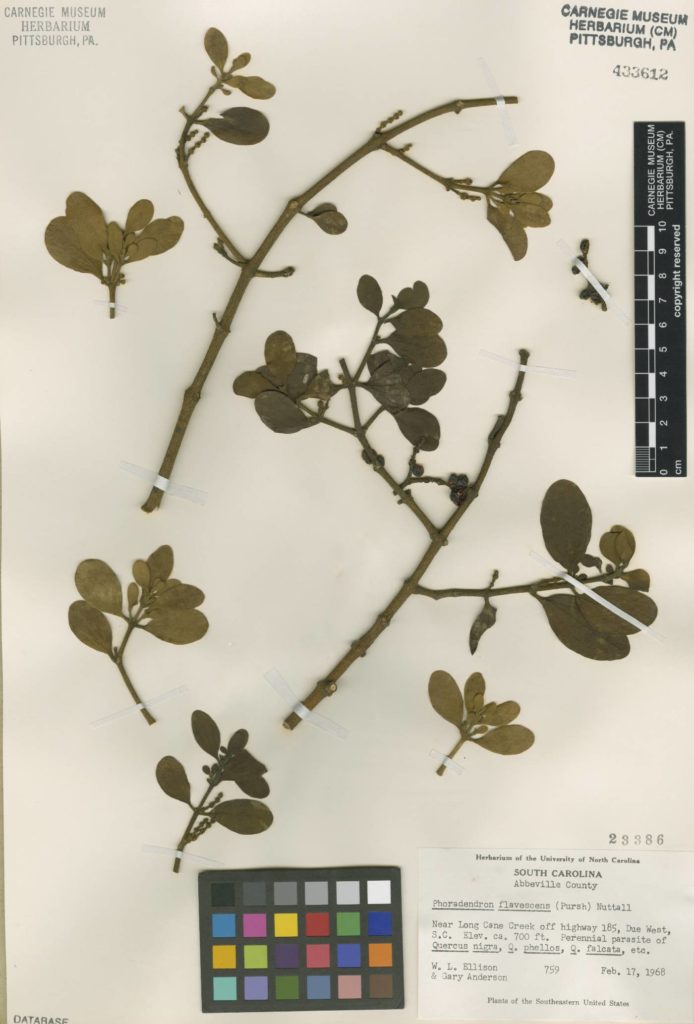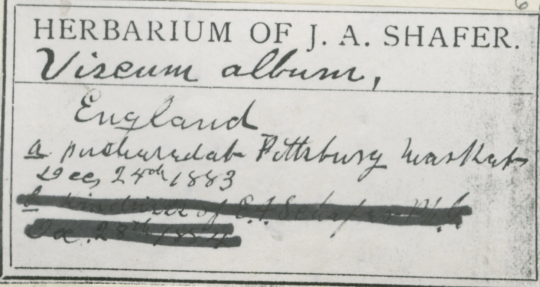
John A. Shafer bought this mistletoe at a market in Pittsburgh, Pennsylvania on Christmas Eve 1883. Sixteen years later, Shafer became the museum’s first botany curator. This mistletoe’s scientific name is Viscum album.
Mistletoes refer to many species within the genus Viscum. Usually, mistletoes refer to a species native to Europe, Viscum album. (“Album” is Latin for white.) European mistletoe has a deep cultural history, dating back to ancient Greece. It remains a well-known holiday decoration today.
Mistletoes are Hemi-Parasitic
Did you know that mistletoes are hemi-parasitic plants? They grow on the branches of trees like oaks, with special roots (called “haustorium”). These roots penetrate host trees to obtain water and nutrients. However, mistletoes don’t get all of their nutrients from their host plants. Hemi-parasitic plants like mistletoes make some of their own nutrients. They do this like other plants, through photosynthesis.
Mistletoe Germination
How do mistletoes germinate high up on the branches of trees? They have evolved to produce berries which birds like to eat. Birds then fly around, land on another branch, and poop viable mistletoe seeds. Without the help of birds, the seeds would likely just fall to the ground.
Mistletoes are native to the United States, too. American mistletoe (Phoradendron leucarpum) is native to southeastern states. People harvest and and sell this species in the United States in Christmas traditions, just like European mistletoe. The plant below is part of the museum’s herbarium and is from South Carolina in 1968. This specific American mistletoe had more than one host plant, all oak trees.


Botanists at Carnegie Museum of Natural History share pieces of the herbarium’s historical hidden collection on the dates they were discovered or collected. Check back for more!
